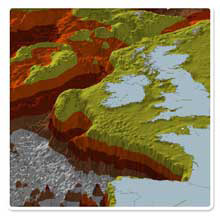 |
|||
High seas However, there are provisions for conservation within the UNCLOS, with nations required to cooperate in the conservation of living marine resources of the High Seas (UNCLOS, Articles 116-120). One development from the UNCLOS (and subsequent supplementary agreement on the implementation of Part XI in 1996; UN, 1996) was the genesis of the International Seabed Authority which regulates all solid, liquid or gaseous mineral resources at or beneath the seabed in the High Seas. Unfortunately, many legal provisions have not yet been developed into a sufficiently comprehensive framework to efficiently manage the majority of resources in the High Seas (FAO 2004). Human activity is continually expanding into deep-sea areas. The lack of incentives for nations to constrain fishing effort and comply with conservation measures on the High Seas raises concern over the absence of effective international measures for assessing and protecting newly-discovered habitats (FAO 2004). The deep sea contains many distinct habitats including, hydrothermal vents, cold seeps, seamounts and cold-water coral reefs amongst the expanses of abyssal muds, themselves home to a notably rich animal community. This review summarises emerging and established threats to deep-sea ecosystems; current protection and enforcement initiatives are discussed and their potential effectiveness is analysed using a cold-water coral ecosystem case study. |
© All rights reserved Launched 01/09/05
 Many deep-sea areas are found beyond the exclusive economic zone of individual nations on the High Seas. Under the Third United Nations Convention on the Law of the Sea (UNCLOS; UN, 1982), the High Seas are open-access where all nations have the right to engage in fishing (UNCLOS, Article 87). With no clear ownership or jurisdiction, these areas are potentially vulnerable to over exploitation and unregulated activities.
Many deep-sea areas are found beyond the exclusive economic zone of individual nations on the High Seas. Under the Third United Nations Convention on the Law of the Sea (UNCLOS; UN, 1982), the High Seas are open-access where all nations have the right to engage in fishing (UNCLOS, Article 87). With no clear ownership or jurisdiction, these areas are potentially vulnerable to over exploitation and unregulated activities.